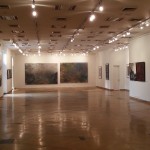 Tourists don’t know where they have been, travellers don’t know where they are going; art shows have been a reason to rewrite many an itinerary. While Paul Theroux actually said the first part, the second bit I made up. Then come to think of it, is there any traveller worth his curious salt who can resist art? Mythical or megalographic, metonymic or metaphoric, art as the collective conscience of a culture, the true mirror of social evolution, a phantasmagoria of countless interpretations?
Tourists don’t know where they have been, travellers don’t know where they are going; art shows have been a reason to rewrite many an itinerary. While Paul Theroux actually said the first part, the second bit I made up. Then come to think of it, is there any traveller worth his curious salt who can resist art? Mythical or megalographic, metonymic or metaphoric, art as the collective conscience of a culture, the true mirror of social evolution, a phantasmagoria of countless interpretations?
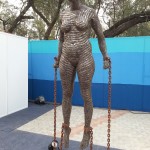 A typical tourist is shutter-happy, breezes by with a bundle of ‘I was here’ photographs; the traveller takes time out to know, get under the skin of the land. By making local buddies or staying with one. By striking up informative conversations with the bellhop or the homestay host, the waiter or the cabbie. However, this takes quite some patience and tact – no butting in or treading on local sensibilities – not really for everyone. Then again, even if you do, it comes with its own set of constraints, like credibility for one. Once in Kathmandu I was directed to a seedy dance bar in Thamel by a recent pal; I had asked her about ethnic dances.
A typical tourist is shutter-happy, breezes by with a bundle of ‘I was here’ photographs; the traveller takes time out to know, get under the skin of the land. By making local buddies or staying with one. By striking up informative conversations with the bellhop or the homestay host, the waiter or the cabbie. However, this takes quite some patience and tact – no butting in or treading on local sensibilities – not really for everyone. Then again, even if you do, it comes with its own set of constraints, like credibility for one. Once in Kathmandu I was directed to a seedy dance bar in Thamel by a recent pal; I had asked her about ethnic dances.
“Oh, but we love dancing and we always dance to your Bollywood songs.” She was not willing to let go of her newly bestowed cultural custodianship. “And in ‘Pussy Cats’ you will find some very interesting dances.” She winked. The next best thing? Head to the nearest museum. Or a painting or sculpture, lithograph, photograph or book exhibition.
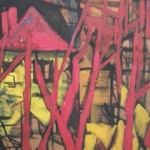 It is not just a happy coincidence that bulk of the art shows in the country takes place during the pleasant-weather months of January, February and March, it is by design. These months have been for ages the peak season when hordes of travellers – domestic and international alike – descend upon Delhi and Mumbai, Kashmir and Kochi, and begin Bharat darshan with the Kumbh Mela or Pushkar. The timing makes sense as culture combines with commerce in equal measure. Organisers estimated footfalls at close to one lakh at the recently concluded India Art Fair in New Delhi – making it the second-most attended art event in the world after Arco, Madrid. On display were 3,500 works by 1,100 artists – from unconventional to individual take on conventions, from good old canvas to new media, from the mildly experimental to the sinister and the shocking. Close on the heels of the Art Fair, the World Book Fair began in the national capital as did the Kala Ghoda in Mumbai. While the Book Fair turned a new page this year, Kala Ghoda continued to revel in its cult status though well into its 15th edition.
It is not just a happy coincidence that bulk of the art shows in the country takes place during the pleasant-weather months of January, February and March, it is by design. These months have been for ages the peak season when hordes of travellers – domestic and international alike – descend upon Delhi and Mumbai, Kashmir and Kochi, and begin Bharat darshan with the Kumbh Mela or Pushkar. The timing makes sense as culture combines with commerce in equal measure. Organisers estimated footfalls at close to one lakh at the recently concluded India Art Fair in New Delhi – making it the second-most attended art event in the world after Arco, Madrid. On display were 3,500 works by 1,100 artists – from unconventional to individual take on conventions, from good old canvas to new media, from the mildly experimental to the sinister and the shocking. Close on the heels of the Art Fair, the World Book Fair began in the national capital as did the Kala Ghoda in Mumbai. While the Book Fair turned a new page this year, Kala Ghoda continued to revel in its cult status though well into its 15th edition.
 The World Book Fair, till now a bi-annual event, will be an annual event henceforth thanks to the stupendous response. In today’s Kindle-age, the sight of snaking queues for book launches by popular authors was sweetly unnerving. Then the organisers – the Sangeet Natak Academy (surprised again!) – too deserve a pat on the back. In addition to the usual gig of readings, launches, workshops and seminars, there was the reasonably adulated ‘Desraj’ – a presentation of the indigenous performing arts of India by 30 different tribes from all over the country. More than an astute business move, a crowd puller tactic, the Academy had its valid reason: ‘Literature has its beginnings from the oral tradition and performing traditions, so we thought that it is a great opportunity to showcase to the world the indigenous performing arts of India through the World Book Fair.’ The thronging crowd was well-deserved.
The World Book Fair, till now a bi-annual event, will be an annual event henceforth thanks to the stupendous response. In today’s Kindle-age, the sight of snaking queues for book launches by popular authors was sweetly unnerving. Then the organisers – the Sangeet Natak Academy (surprised again!) – too deserve a pat on the back. In addition to the usual gig of readings, launches, workshops and seminars, there was the reasonably adulated ‘Desraj’ – a presentation of the indigenous performing arts of India by 30 different tribes from all over the country. More than an astute business move, a crowd puller tactic, the Academy had its valid reason: ‘Literature has its beginnings from the oral tradition and performing traditions, so we thought that it is a great opportunity to showcase to the world the indigenous performing arts of India through the World Book Fair.’ The thronging crowd was well-deserved.
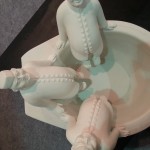 The success of Mumbai’s Kala Ghoda spawned many others to come up around the same time in the city – Celebrate Bandra, Kitaab Festival and Mumbai Festival are some. However, the Kala Ghoda or the ‘Black Horse’ gallops above the rest in popularity as well as variety. (The precinct where it is held got its name from the colonial statue of the Prince of Wales astride on his stately black horse which was later removed into a zoo; peer closely and you can see art here too.) Celebrated over nine days, this year’s edition saw some 400 events and an appreciative crowd of 1,50,000. The proceeds are funnelled towards the restoration and upkeep of the heritage buildings and institutions in the area that have fallen on hard times. The altruistic aspiration of the festival might have added to its charm, then not all is charity in the Mumbai art scene. The recent years have witnessed an exponential growth in the numbers of private art galleries here. The diversity in themes and mediums has reached a new acme and galleries like Volte, Tasveer and Maskara to name a few, have carved out a reputation for their collection and promotional works. To quote a gallery owner, “There were earlier just two private art galleries in Mumbai, now there are more than 300.” Fuelling the growth is the interest of foreign galleries and HNI collectors who invest in art; both the wives of the feuding billionaire brothers, the Ambanis, are avid art collectors and dream patrons to many upcoming artists in the city.
The success of Mumbai’s Kala Ghoda spawned many others to come up around the same time in the city – Celebrate Bandra, Kitaab Festival and Mumbai Festival are some. However, the Kala Ghoda or the ‘Black Horse’ gallops above the rest in popularity as well as variety. (The precinct where it is held got its name from the colonial statue of the Prince of Wales astride on his stately black horse which was later removed into a zoo; peer closely and you can see art here too.) Celebrated over nine days, this year’s edition saw some 400 events and an appreciative crowd of 1,50,000. The proceeds are funnelled towards the restoration and upkeep of the heritage buildings and institutions in the area that have fallen on hard times. The altruistic aspiration of the festival might have added to its charm, then not all is charity in the Mumbai art scene. The recent years have witnessed an exponential growth in the numbers of private art galleries here. The diversity in themes and mediums has reached a new acme and galleries like Volte, Tasveer and Maskara to name a few, have carved out a reputation for their collection and promotional works. To quote a gallery owner, “There were earlier just two private art galleries in Mumbai, now there are more than 300.” Fuelling the growth is the interest of foreign galleries and HNI collectors who invest in art; both the wives of the feuding billionaire brothers, the Ambanis, are avid art collectors and dream patrons to many upcoming artists in the city.
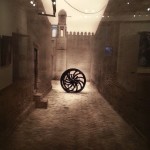 If Mumbai has been holding the art fort for the past many decades, today Delhi has gently – rudely, for many – nudged the commercial hub out to lay stake on the ‘cultural hub’ tag. In a recent interview, artist Anjolie Ela Menon put it in perspective: “More affordable than Mumbai, Delhi today is like Paris after the first World War. It was an era when Picasso, Hemingway and Scott Fitzgerald deserted the expensive Montmarte district and settled in the less expensive but creatively stimulating Montparnasse.” The parallel rings true in the Indian scenario as well: S.H. Raza and Krishen Khanna, two prominent members of the Bombay Progressive Artists Group, are today based out of Delhi. Raza, who lived in Paris for 60 years, chose the national capital as, “so much takes place in the city in dance, music, theatre, the visual arts, literature and poetry that I feel the vibrant and dynamic plurality of India’s contemporary creativity is on its best display here”.
If Mumbai has been holding the art fort for the past many decades, today Delhi has gently – rudely, for many – nudged the commercial hub out to lay stake on the ‘cultural hub’ tag. In a recent interview, artist Anjolie Ela Menon put it in perspective: “More affordable than Mumbai, Delhi today is like Paris after the first World War. It was an era when Picasso, Hemingway and Scott Fitzgerald deserted the expensive Montmarte district and settled in the less expensive but creatively stimulating Montparnasse.” The parallel rings true in the Indian scenario as well: S.H. Raza and Krishen Khanna, two prominent members of the Bombay Progressive Artists Group, are today based out of Delhi. Raza, who lived in Paris for 60 years, chose the national capital as, “so much takes place in the city in dance, music, theatre, the visual arts, literature and poetry that I feel the vibrant and dynamic plurality of India’s contemporary creativity is on its best display here”.
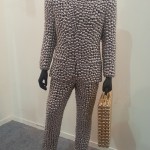 Dynamism? Of course. Vibrant? No doubt. While one art festival aims to broaden the common man’s understanding of art yet another brings art within easy reach. Zynna – Art Deco aimed to democratise art by bringing it into everybody’s home through workshops on the many nuances of art on what to pick and why. Visitors to the India Habitat Centre – a hotspot for culture in the capital – most of February hovered around a curious exhibit. It was a camera dismantled down to its many lenses and casings and tautly suspended from a wooden frame by threads. “Before we decided to deconstruct the photographs, we wanted to explore and look into what makes these images,” says S. Thiru of his installation ‘Genesis’. ‘Genesis’ is one of the works placed across 15 public sites all over Delhi. Called ‘Publica’ the festival is the brainchild of art enthusiast Surbhi Modi. “Isn’t it the same set of people that revolve around at all art gatherings and openings? We need to get art to public platforms so that there is more audience.” Check.
Dynamism? Of course. Vibrant? No doubt. While one art festival aims to broaden the common man’s understanding of art yet another brings art within easy reach. Zynna – Art Deco aimed to democratise art by bringing it into everybody’s home through workshops on the many nuances of art on what to pick and why. Visitors to the India Habitat Centre – a hotspot for culture in the capital – most of February hovered around a curious exhibit. It was a camera dismantled down to its many lenses and casings and tautly suspended from a wooden frame by threads. “Before we decided to deconstruct the photographs, we wanted to explore and look into what makes these images,” says S. Thiru of his installation ‘Genesis’. ‘Genesis’ is one of the works placed across 15 public sites all over Delhi. Called ‘Publica’ the festival is the brainchild of art enthusiast Surbhi Modi. “Isn’t it the same set of people that revolve around at all art gatherings and openings? We need to get art to public platforms so that there is more audience.” Check.
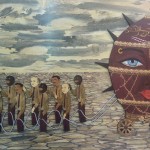 Stimulation in art is a granted. But information is mostly highbrow, creates wrinkles. Then it is not so always. Many a time there are some very insightful and delightful ones as well. “The drivers who used to drive trucks from Rawalpindi to the borders of Afghanistan were the ones who started it,” says Pakistan-based painter Anjum Rana on the truck art exhibition she held recently at India International Centre in Delhi. During periods of long absences from their loved ones, the drivers started to paint the images of their loved ones on their trucks so that they could always be ‘near’ them. When the Afghan war started, the chubby smiling faces made way for grim fighter planes and machine guns. The exhibition succeeded in convincing visitors that truck art should be not only revived but preserved too from the onslaught of the cheaper digital threats.
Stimulation in art is a granted. But information is mostly highbrow, creates wrinkles. Then it is not so always. Many a time there are some very insightful and delightful ones as well. “The drivers who used to drive trucks from Rawalpindi to the borders of Afghanistan were the ones who started it,” says Pakistan-based painter Anjum Rana on the truck art exhibition she held recently at India International Centre in Delhi. During periods of long absences from their loved ones, the drivers started to paint the images of their loved ones on their trucks so that they could always be ‘near’ them. When the Afghan war started, the chubby smiling faces made way for grim fighter planes and machine guns. The exhibition succeeded in convincing visitors that truck art should be not only revived but preserved too from the onslaught of the cheaper digital threats.
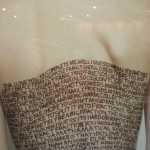 Art affects the viewer, wrote Tolstoy. Broadening the scope further, real art thus, according to the writer, has the capacity to unite people. This coming together of heads and ideas, celebration of the union of the diverse, sieving order out of the chaos are all the by-products of the many manifestations of art – paintings or sculpture, music or literature, even architecture and movies. Yes, especially the movies. From the mainstream India International Film Festival to niche ones like Kashish – Mumbai International Queer Film Festival and Kolkata’s Dialogues – touted as India’s longest running LGBT film festival, all have their own loyal audiences which are steadily growing year on year. Then, art cannot always be confined to the canvas or cinemas. A few days back patriarchy had a ceremonial burial in a proper coffin.
Art affects the viewer, wrote Tolstoy. Broadening the scope further, real art thus, according to the writer, has the capacity to unite people. This coming together of heads and ideas, celebration of the union of the diverse, sieving order out of the chaos are all the by-products of the many manifestations of art – paintings or sculpture, music or literature, even architecture and movies. Yes, especially the movies. From the mainstream India International Film Festival to niche ones like Kashish – Mumbai International Queer Film Festival and Kolkata’s Dialogues – touted as India’s longest running LGBT film festival, all have their own loyal audiences which are steadily growing year on year. Then, art cannot always be confined to the canvas or cinemas. A few days back patriarchy had a ceremonial burial in a proper coffin.
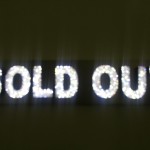 “Patriarchy svaha, women equality wah-wah.” Chanted a group from neighbouring Gurgaon grouped outside a swanky mall. There were about 300 of them all dressed in funky dresses and outlandish headgears. A larger group of onlookers gathered around the convivial fracas, nodding, grim smiles. The art on display needed no explanation and many – including several foreigners – joined the chant.
“Patriarchy svaha, women equality wah-wah.” Chanted a group from neighbouring Gurgaon grouped outside a swanky mall. There were about 300 of them all dressed in funky dresses and outlandish headgears. A larger group of onlookers gathered around the convivial fracas, nodding, grim smiles. The art on display needed no explanation and many – including several foreigners – joined the chant.
Wah-wah!
All the illustrations used in this article are original photographs of exhibitions from in and around New Delhi; the first one is the gallery at India Habitat Centre.


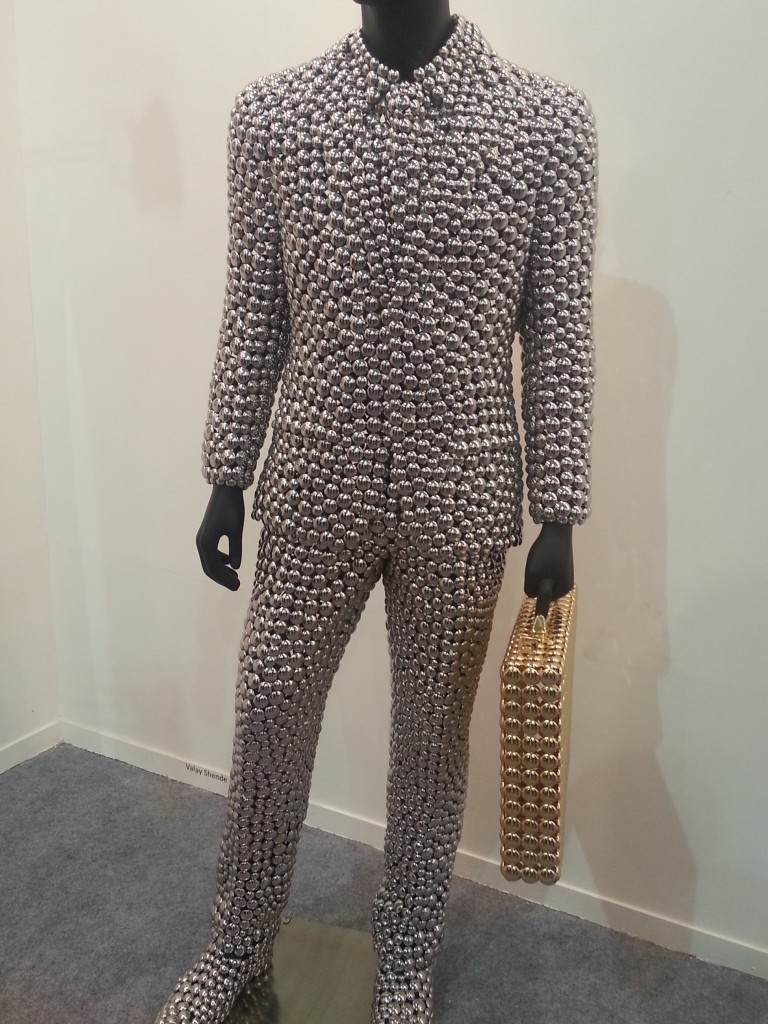









We are The Art Traveller please visit us! 🙂
We are The Art Traveller please visit us at https://www.facebook.com/thearttravellerglobal 🙂